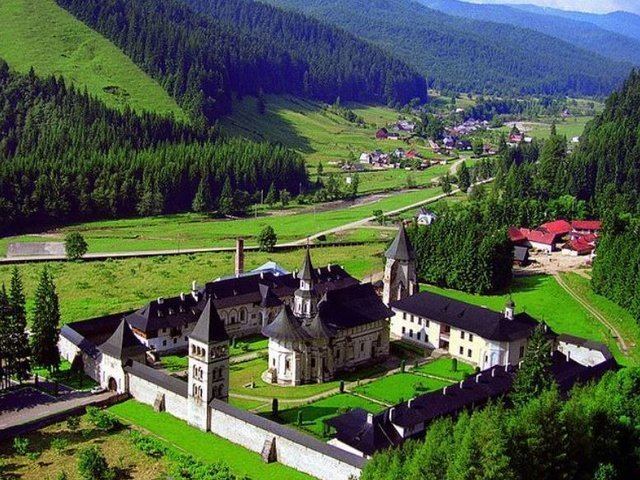Country Romania Historical region Southern Bukovina Telephone code (+40) 230 or (+40) 330 Area 8,553 km² | Development region Nord-Est Area rank 2nd ISO 3166 code RO-SV Capital Suceava | |
 | ||
University Ștefan cel Mare University of Suceava Clubs and Teams CSM Suceava, Zimbrul Siret Points of interest Putna Monastery, Voroneț Monastery, Moldovița Monastery, Sucevița Monastery, Cetatea de Scaun Destinations Vatra Dornei, Suceava, Gura Humorului, Câmpulung Moldovenesc, Rădăuți | ||
Catedrala catolic din baia catholic cathedral in baia suceava county romania
Suceava ([suˈt͡ʃe̯ava]) is a county (județ) of Romania, comprising mainly the historical Moldavian region of southern Bukovina, and a few villages in Transylvania, with the capital city at Suceava.
Contents
- Catedrala catolic din baia catholic cathedral in baia suceava county romania
- Map of Suceava County Romania
- Tren militar in judetul suceava 27 04 2016 military train in suceava county
- Demographics
- Geography
- Neighbours
- Economy
- Tourism
- Politics
- Administrative divisions
- 2010 floodings
- References
Map of Suceava County, Romania
Tren militar in judetul suceava 27 04 2016 military train in suceava county
Demographics
In 2011, Suceava County had a population of 634,810, with a population density of 74/km2.
Geography
This county has a total area of 8,553 square kilometres (3,302 sq mi).
The western side of the county consists of mountains from the Eastern Carpathians group: the Rodna Mountains, the Rarău Mountains, the Giumalău Mountains and the Ridges of Bukovina with lower heights. The county's elevation decreases toward the east, with the lowest height in the Siret River valley.
The rivers crossing the county are the Siret River with its tributaries: the Moldova River, the Suceava River and the Bistrița River.
Neighbours
Economy
The predominant industries in the county are:
Tourism
The main tourist attractions in the county are:
Politics
The Suceava County Council, elected at the 2016 local government elections, is made up of 37 counselors, with the following party composition:
Administrative divisions
Suceava County has 5 municipalities, 11 towns and 98 communes
2010 floodings
During June 2010, Gheorghe Flutur, the president of Suceava County, told the Mediafax news agency that his region was one of the worst hit in the country. In the morning of June 29th, relief work was coordinated to deal with flooding that killed 21 people, and caused hundreds to be evacuated from their homes.
